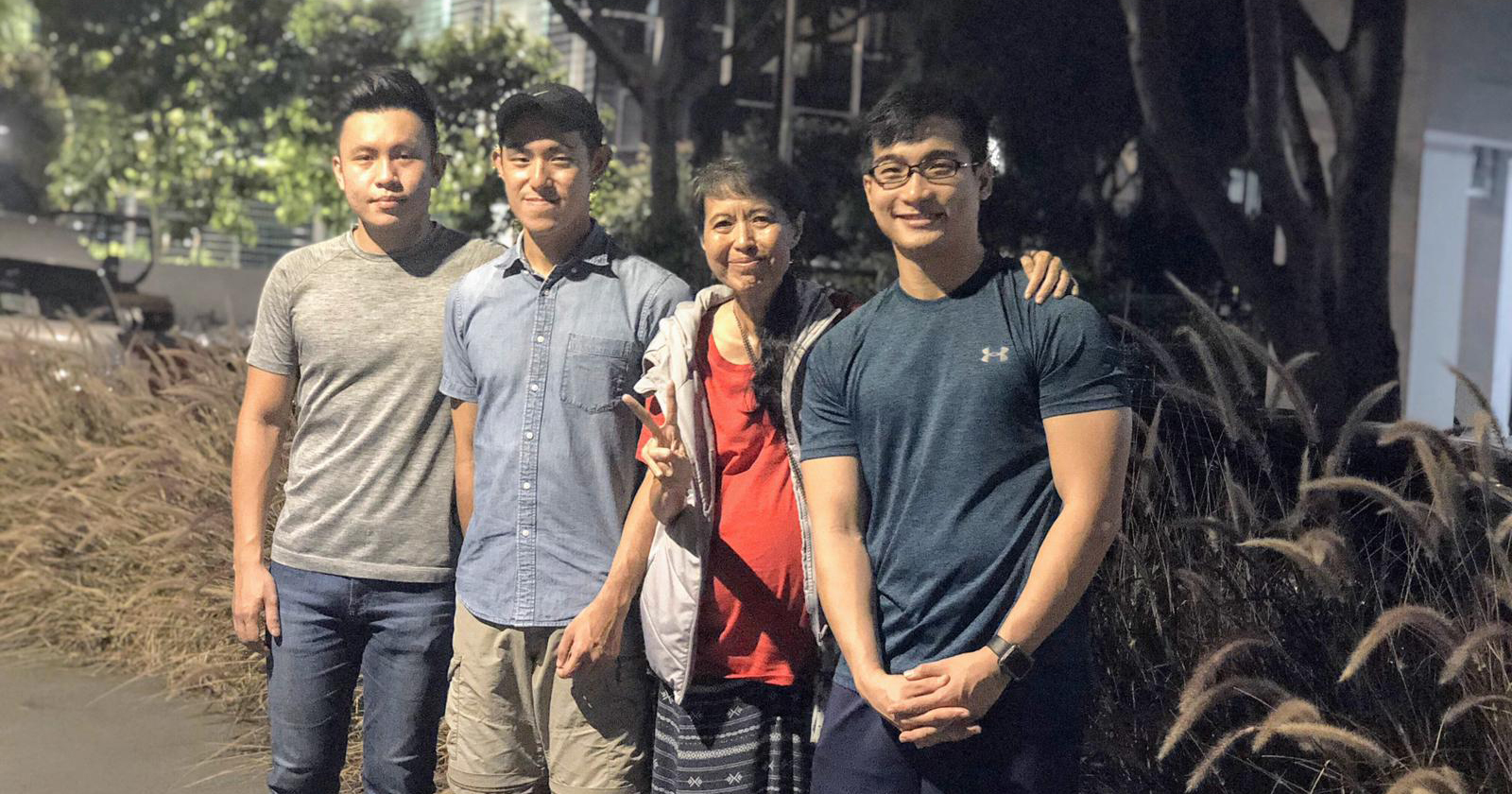At one point or another, you might recall coming cross the traditional heartwarming clips by the Ministry of Education.
They come with enigmatic names like "The Pen", pithy statements like "Every child can achieve when there's a teacher who believes", buoyed by a soothing piano melody, and more often than not, a fleeting desire to mould the future.
It's a rather idealistic picture of a teacher, one must eventually admit, and few, eventually, spend their teaching careers still fitting that description.
One of these rare gems is Sie Siok Hui.
Sie (pronounced See) taught Mathematics and English at a wide range of secondary schools, both brand name and otherwise.
These included Crescent Girls' School, the Singapore Chinese Girls' School, NUS High School of Mathematics and Science, Boon Lay Secondary School, Jurong West Secondary School, Bedok Green Secondary School, and Nan Hua High School.
Throughout her 30-plus years as an educator, Sie left a lasting impression on her students who describe her as a sensitive person who valued every individual.
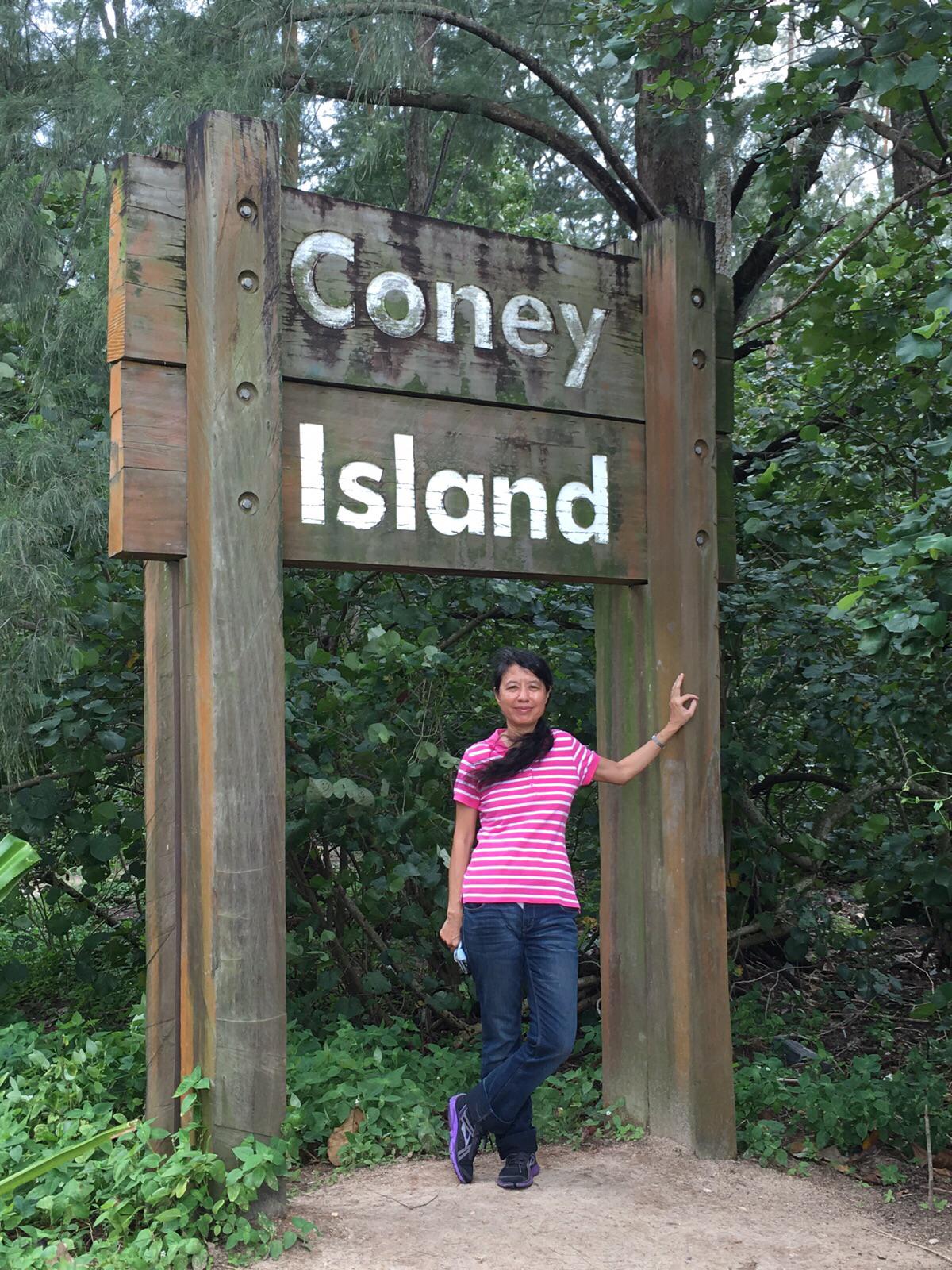 Sie Siok Hui. Image courtesy of Justin Ong.
Sie Siok Hui. Image courtesy of Justin Ong.
Unfortunately, Sie was diagnosed with ovarian cancer in 2016, and passed away last year at the age of 57. In her final years, though, she condensed her reflections from her years of experience into a book published posthumously, titled A Teacher's Race Course: Ruminations & Reflections.
Sie's honesty shines through the book, put together and published by a group of her former students, especially in the parts where she talks about her experiences with her students, many of whom started out as underdogs.
Among her students is noted Magnum photographer Sim Chi Yin, who counts among her storied achievements groundbreaking journalism here in Singapore and the experience of being 2017's Nobel Peace Prize photographer:
After learning about and reading the book, I decided to sit down with some of her former students to hear from them what inspired them so greatly about her.
A heart for "average" students
"Hope" was a word that popped up often in my conversations with Sie's ex-students.
46-year-old Koh Soo Peng describes herself as an "average student" when she was taught by Sie in 1988 and 1989 at Crescent Girls' School (CGS).
As an art student during her time in CGS, Koh was in the last class in her cohort. That class, Koh says, was deemed by most of her other teachers to be academic failures, least likely to make it on the traditional Junior College route.
Sie, she observes, was different.
Long before the phrase "alternative routes to success" came into vogue, Sie took the girls to Baharuddin Vocational Institute (which taught Graphic Design) and the Nanyang Academy of Fine Arts (NAFA) to show them that there were other options besides junior colleges.
“When she brought me to those places, she gave me a lot of hope," says Koh, who is now a professional graphic designer. "My direction became clearer.”
Koh's classmate, Mong Lye Kuan, remembers Sie's uncanny sensitivity to her students' needs.
Mong says she came from a poor family and back then as a student under Sie, Mong had managed to secure a bursary for her O-Level examination fees. When her family ran into some financial trouble, Mong approached Sie for the money to help her family tide over.
“She refused to give it to me!" recalls Mong. "She said if I give you, you won’t have money to sit for O-Levels!”
Instead of handing over her bursary money, Sie personally took Mong to the bank and helped her open her own bank account to start saving money.
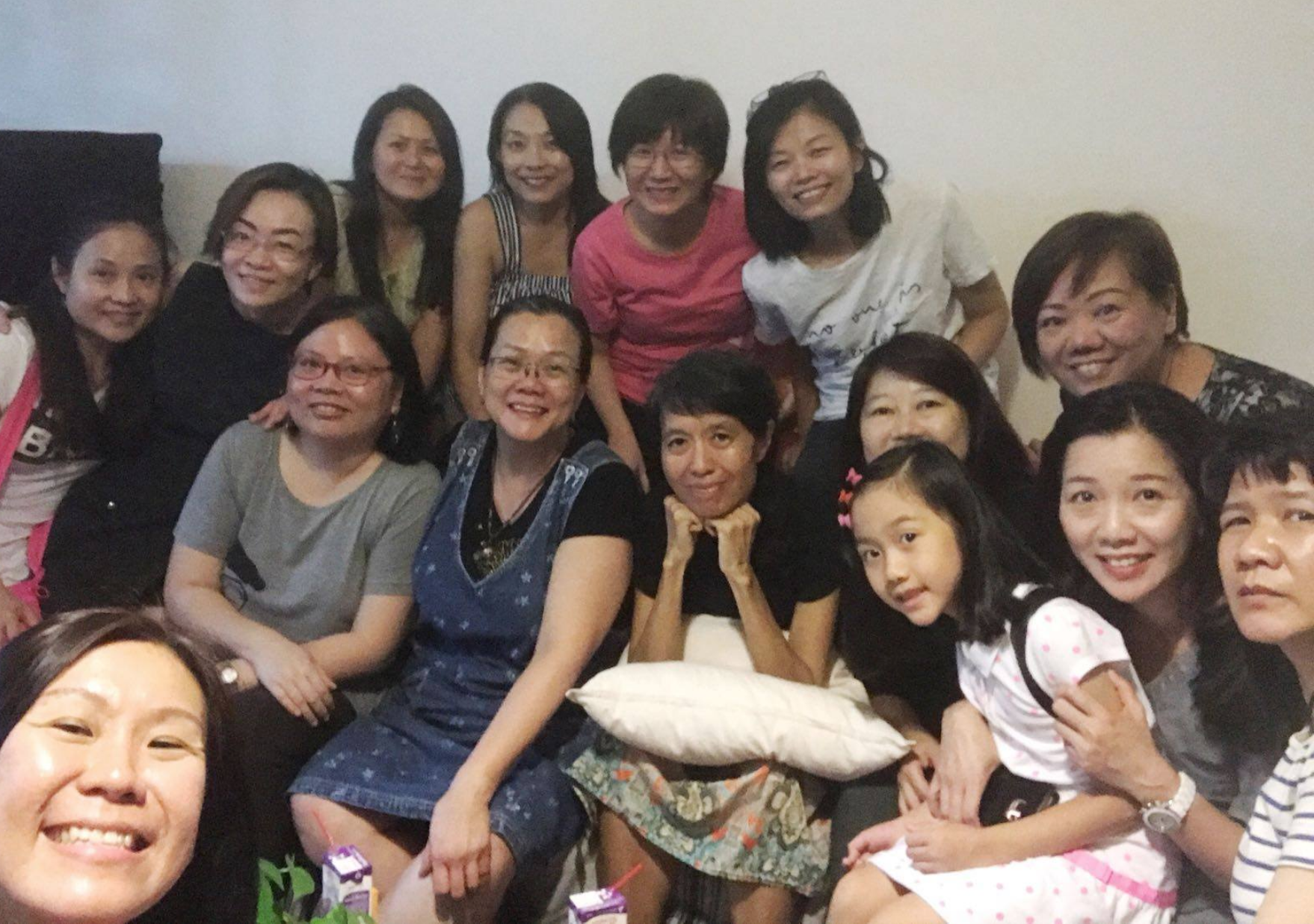 Mong and Koh with Sie at a class reunion. Photo courtesy of Koh Soo Peng.
Mong and Koh with Sie at a class reunion. Photo courtesy of Koh Soo Peng.
For 29-year-old Justin Ong, an alumnus of Boon Lay Secondary, Sie was there for him at a crucial time in his life.
When he was in Secondary 2, Ong lost his father.
Sie, he says, gave him hope when he was overwhelmed from balancing his schoolwork, co-curricular activities, part-time work, and also dealing with his father's death.
“Hope in what sense?” he pauses to think, before adding: “Being the adult figure, being there for me, hearing me, and with no judgement. It's a nice feeling, knowing someone is there for you in school.”
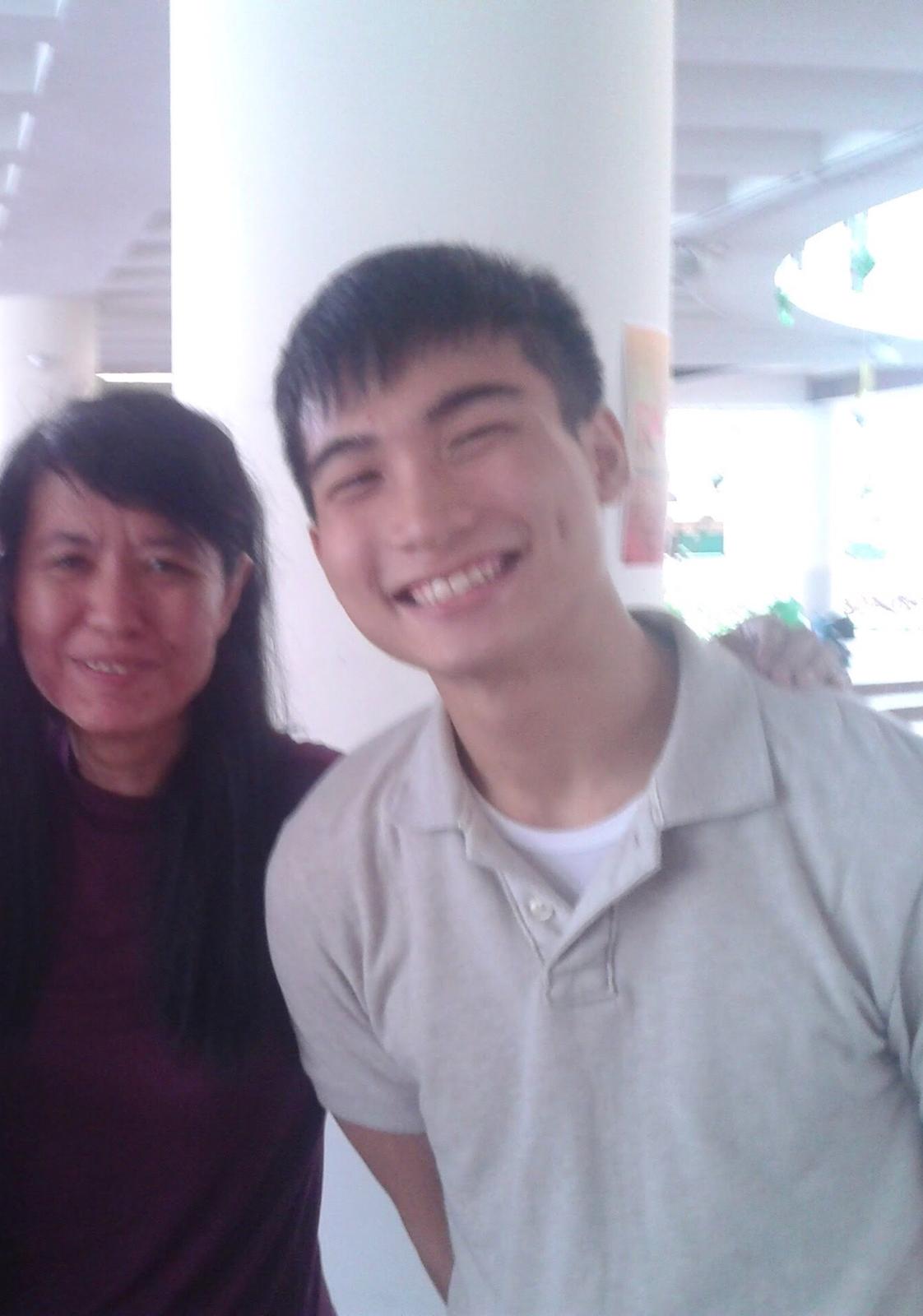 Ong with Sie in 2011. Photo courtesy of Justin Ong.
Ong with Sie in 2011. Photo courtesy of Justin Ong.
In her book, Sie attributes this sensitivity she possesses to a painful experience she went through when she was 21. A confluence of circumstances involving family, over-involvement in her CCA, and difficult personal relationships forced Sie to repeat a year in university.
Her education bursary was also suspended. Without support, Sie was at a very low point in her life.
"But that experience thought me what it was like to be at rock-bottom. I never saw students who failed in the same way after this. I knew then what it was like to be where they were, a feeling I admit I never knew before."
"Every student is a person worthy of value"
For Sie, that experience developed in her an affinity for students who were deemed weak, perhaps even going the extra mile for them because she saw value where others saw none.
"I value every one of [my students] whether they achieved straight As or they failed," writes Sie. "It does not matter. Each of them is a human being, a person worthy of value."
For Koh and Mong who were in the last class in their cohort, as well as Ong who came from a neighbourhood school, Sie was a remarkable teacher who never once painted them with a broad brush.
“You can tell she understands kids. She understands us," says Ong. "She sees us as individuals. She doesn’t make sweeping statements like ‘You all belong to this category of people’."
“The way she talks to you was so caring and nurturing that you feel you want to do well for her, if not yourself,” says Koh.
Sie also had the ability to see past her students' mistakes and bring out their good points to encourage them.
Mong remembers that her report book, which was regularly filled with red marks, would come with words of affirmation from Sie. "She would say that I was determined, I was persevering, and I was capable," she recalls with a smile.
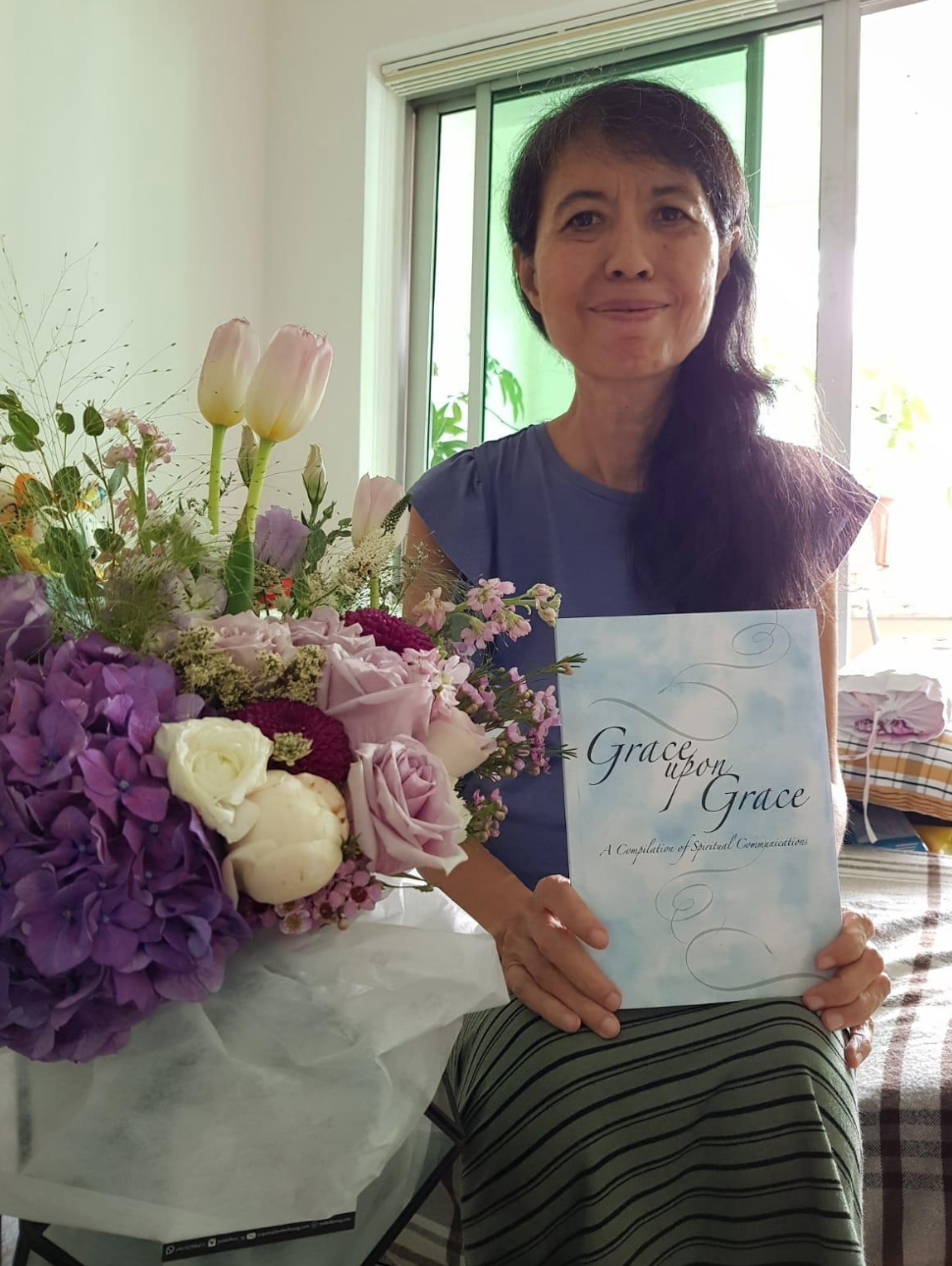 Sie holding a devotional book she wrote documenting her struggle with cancer. Photo courtesy of Koh Soo Peng.
Sie holding a devotional book she wrote documenting her struggle with cancer. Photo courtesy of Koh Soo Peng.
Even in the classroom, Sie would find ways to appeal to her students' strengths.
If a child who was gifted in drawing didn't show interest in mathematical concepts, Sie was known to buy drawing materials for them, giving them free rein to scribble whatever they wanted.
"But it had to be something related to the subject, of course!" Ong laughs.
Other teachers might have labeled the student as a "disruptive child", but what Sie knew was that they needed the space to express themselves.
It might seem intuitive but today, with a heavy workload and large classes, not many teachers take that approach with their students, choosing instead to rely on experience.
"If this had worked for many batches, it will work for you," says Ong, who himself had a brief teaching stint at Methodist Girls' School.
“But it’s not absolutely true because every individual is different — the way we learn, the way we express ourselves, the way we think and the day-to-day that we encounter, our background — all these are different.”
Was asked to teach simpler questions and avoid tougher ones, but refused
One of the first things Ong remembers Sie doing was, in their first Math class, reciting the first 16 decimal places of Pi from memory — just to show her students that Pi extends beyond 3.14 (if you're curious, you can see them here).
When Sie took Mong's class (which, Mong recalls, was "really bad" at Math), she asked if the girls liked money or plants. The class answered money, of course.
"She said 'Oh! Then you must like Math because you need it in your daily life, when you eat, and earn your salary!'" says Mong with a laugh.
From what I was hearing, Sie sounded like a highly-effective teacher with a repertoire of tricks to spark her students' interest in the subjects she taught, never believing that her students should be shortchanged just because they were perceived to be "weaker".
Koh tells me that many years after she graduated from CGS, she found out from Sie that she was told to focus on teaching her classes the easy questions and avoid complex ones for her academically-weaker class.
Thankfully, Koh says, she did not. Instead, Sie coached her students patiently, explaining concepts multiple times using a variety of methods.
Her efforts paid off. For their O-Levels, Ong's cohort, for instance, had 100 per cent passes for A and E Math, and the highest number of distinctions for Math of all time.
Over at CGS, Mong, who typically scored F9 in math, received an A2 at the O-Levels while Koh scored an A1. The students that Sie took scored at least a B3 in their "O" Level A & E Maths.
"I met a good teacher," says Mong. "It’s not because I’m smart. Even if you have the ability, you need someone to bring out that ability in you and nurture you.”
A student who met his ex-teacher every week for 12 years
Ong counts himself as one of the students whose lives were were most greatly impacted by Sie.
After all, it was she who inspired him to become a teacher himself, not only by example but also in sharing her personal stories of dealing with difficult parents, demanding students and others who were underperforming to aid his discernment process in deciding whether or not to enter the teaching profession.
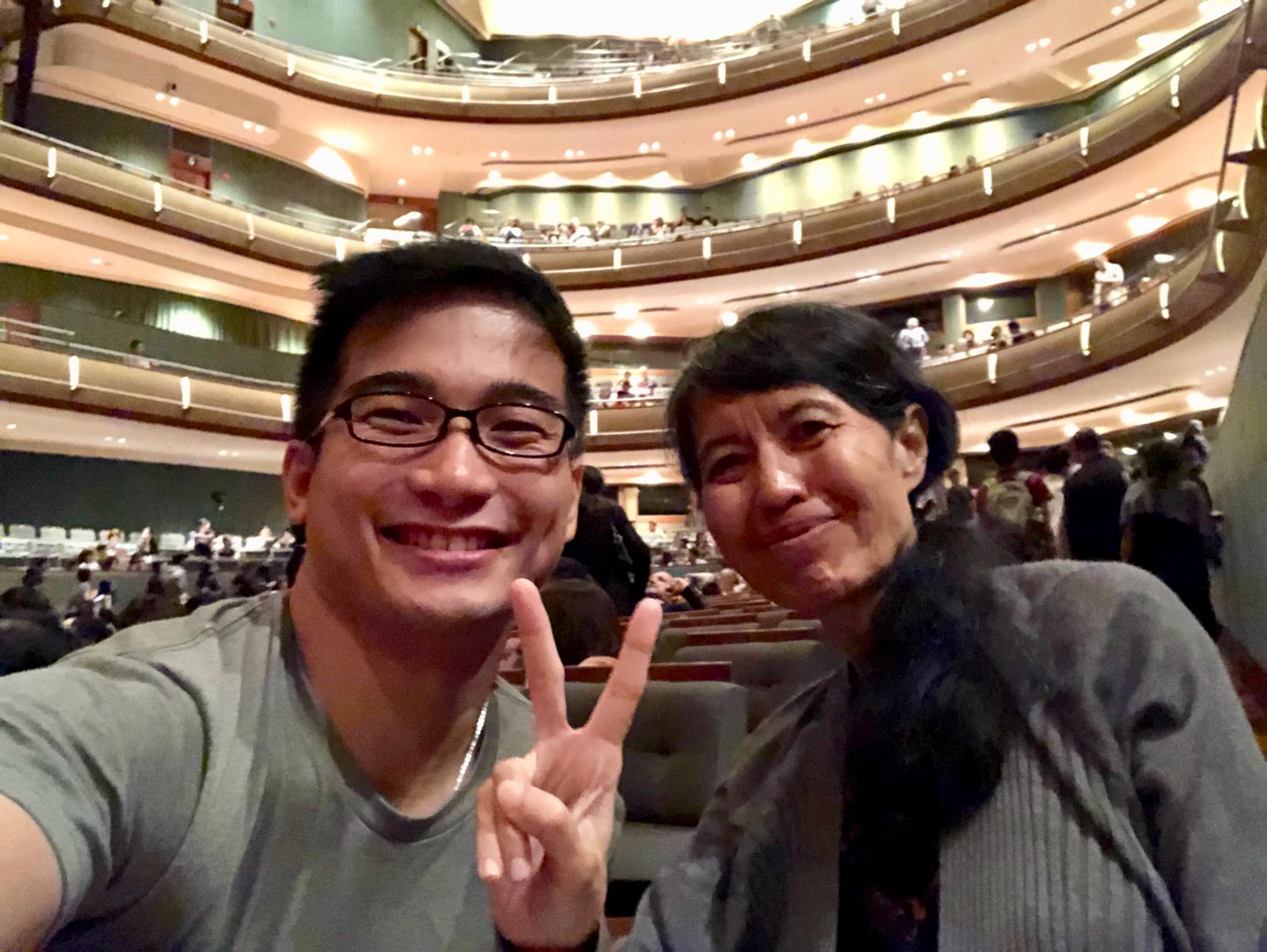 Ong with Sie at a Singapore Chinese Orchestra performance. Image courtesy of Justin Ong.
Ong with Sie at a Singapore Chinese Orchestra performance. Image courtesy of Justin Ong.
Ong was so moved by Sie's teaching that every single week for 12 years after graduating, he made it a point to visit his ex-Mathematics teacher for walks and chats at East Coast Park.
It was during one of these meetings that Sie dropped a bombshell on him: She had ovarian cancer.
Ong remembers that she delivered the news with composure.
“She said, 'I’m going to tell you something. I don’t need you to react. You just need to listen, and then life goes on'.”
Sie then started learning to swim and cycle in a bid to improve her health. It was also a demonstration of her belief — which she writes about in her book — that learning something that you fear or are not good at will make you a better teacher.
She exceeded her own expectations when she managed to swim an entire lap, thanks to coaching from another ex-student, and also managed short cycling trips at East Coast Park and Coney Island.
In a twist of irony, the teacher had become the student.
 Sie picked up cycling in 2016. Image courtesy of Justin Ong.
Sie picked up cycling in 2016. Image courtesy of Justin Ong.
In 2018, Sie managed to reconnect with her CGS girls. For both Koh and Mong, reminiscing with Sie brought back a lot of wonderful memories. Both agree that they never had another teacher like her.
In the last month of Sie's life, she was largely homebound to conserve her strength and focus on finishing the book she started, but would not live to see it to fruition. She passed away on November 1, 2018.
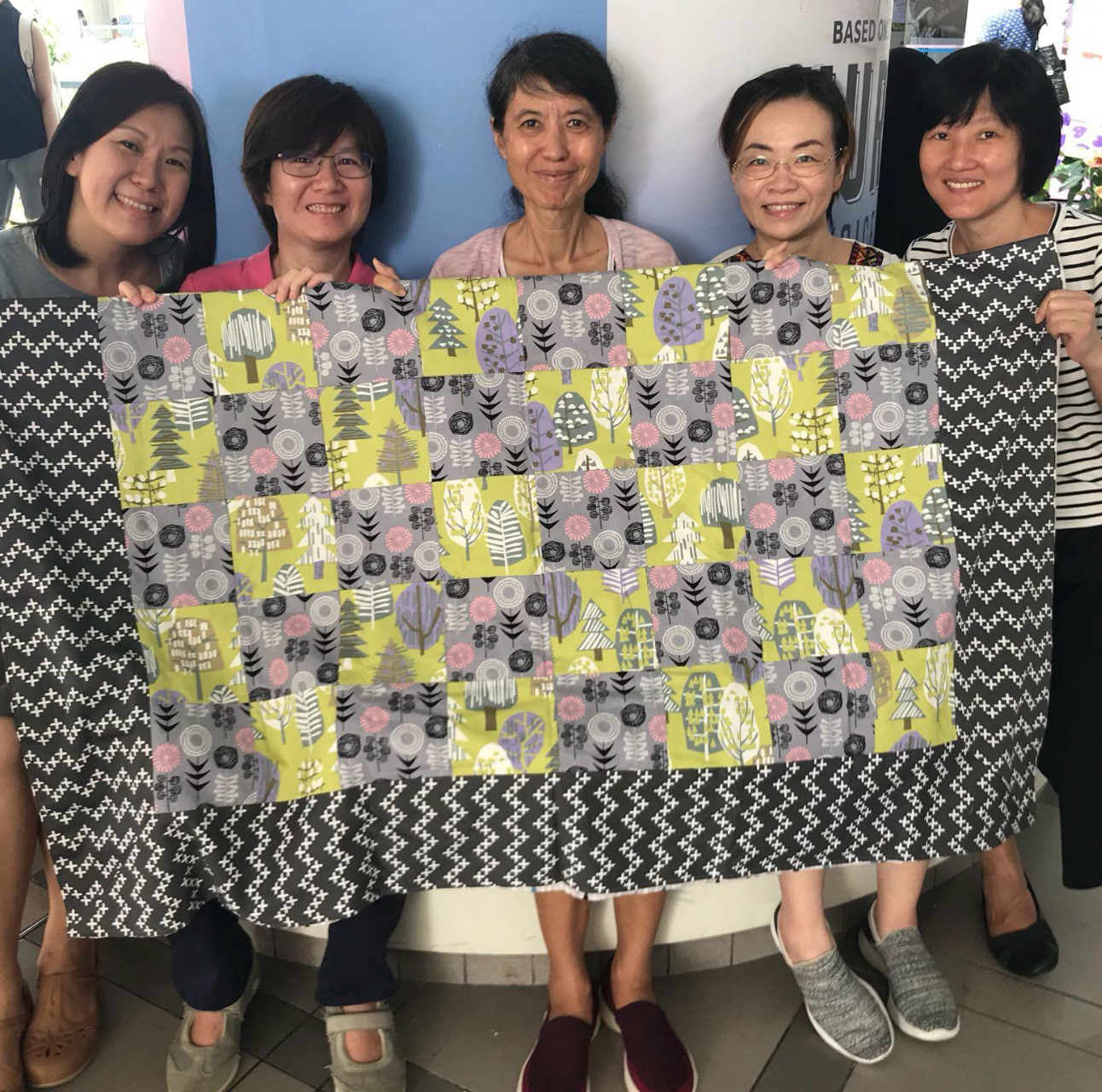 Sie posing with a quilt made by her students in 2018. Image courtesy of Koh Soo Peng.
Sie posing with a quilt made by her students in 2018. Image courtesy of Koh Soo Peng.
“I’ve never met someone like this before," says Ong. "I'm not too sure how many individuals will have that kind of connection with someone senior but I was personally touched in a lot of ways.”
“It’s very sad to see such a good teacher go," Koh adds. "I feel that if only she could live longer, more students could have benefited from her.”
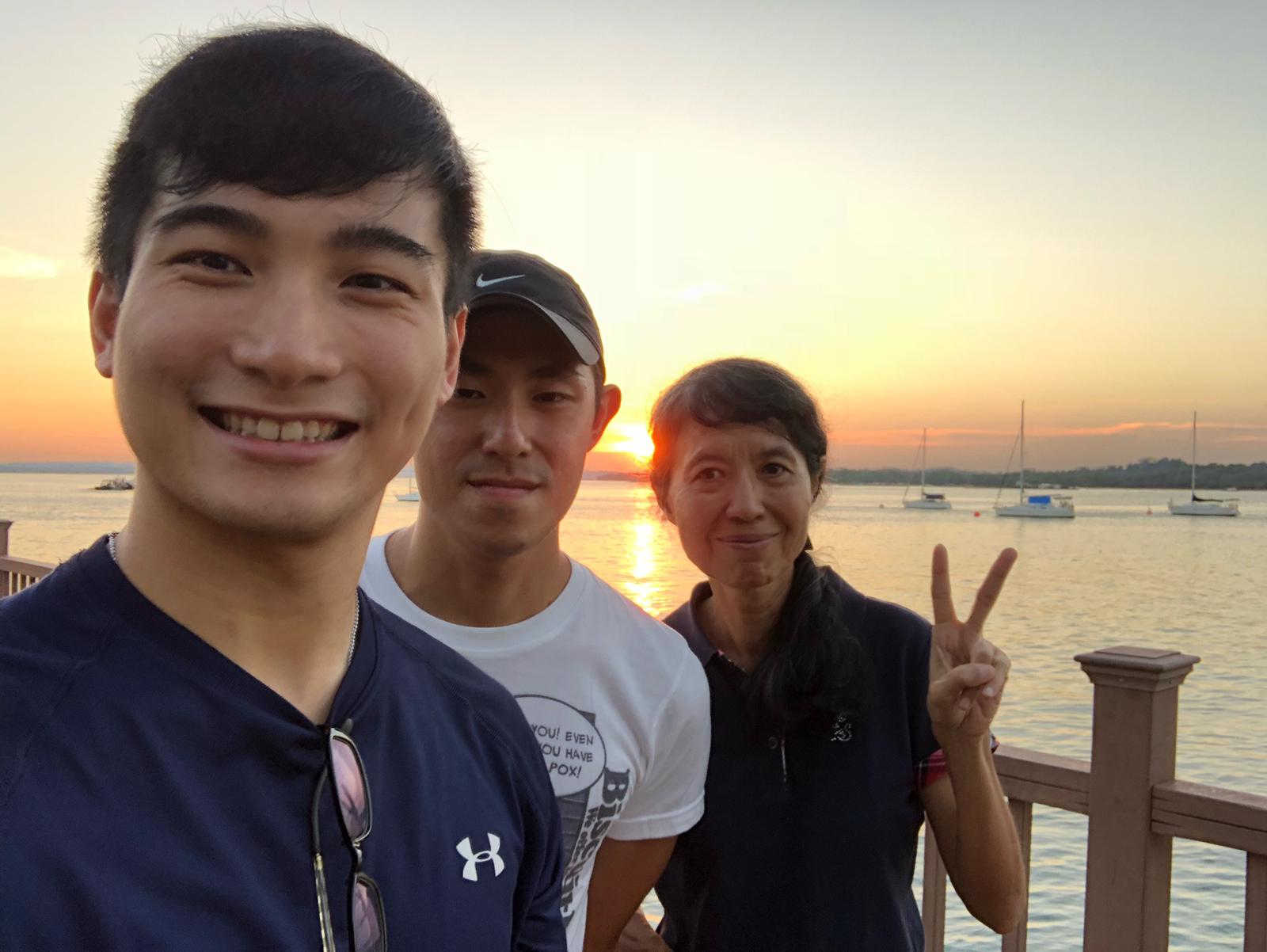 Sie with her students Justin and Kenneth, taken at their last sunset together at Changi. Photo courtesy of Justin Ong.
Sie with her students Justin and Kenneth, taken at their last sunset together at Changi. Photo courtesy of Justin Ong.
I came away from these conversations humbled by Sie's stature.
Many of us would have had good teachers in our time, but her insights about examinations, measuring the relative worth of students and her personal stories and struggles complement these incredible testimonies her former students have about her, and how she touched their lives in a myriad ways.
Whether you are a teacher or not, Sie's life story is a beautiful reminder of the hope we can give to those around us.
A Teacher's Race Course: Ruminations & Reflections is available for purchase from its publisher World Scientific.
Top image courtesy of Justin Ong.
If you like what you read, follow us on Facebook, Instagram, Twitter and Telegram to get the latest updates.
